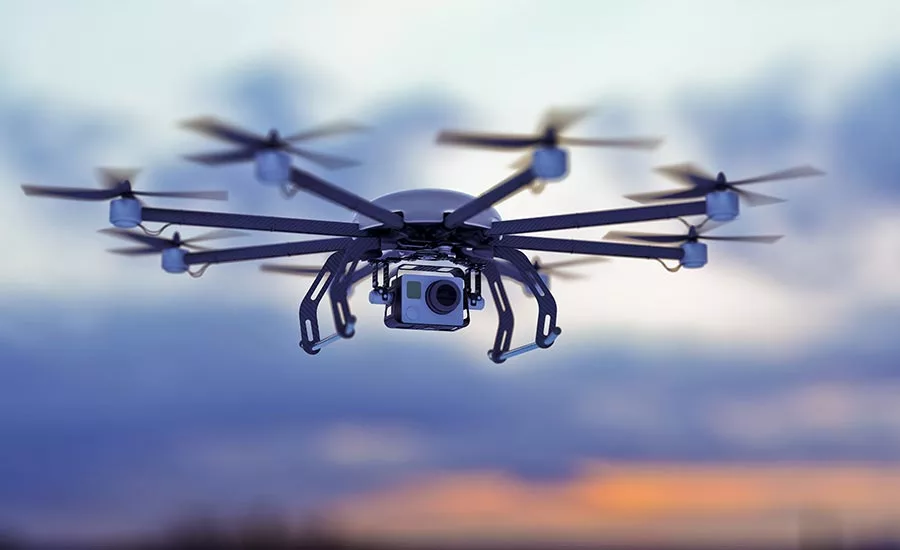Quick Guide for Evaluating Drone Detection: Top 10 Questions to Ask

On the surface it may seem like all drone detection systems are the same, but there are important differences. First, you need to identify your priorities, needs and environment and then align those with the most appropriate detection technology. When evaluating Radio Frequency (RF)-based systems, here are the top 10 questions you should ask.
- What types of drones does the system detect?
There are many commercially available models by several different manufacturers, as well as homemade drone kits, so malicious actors have the same access that hobbyists do. It’s important to note that some drone detection systems can only detect certain drone types and manufacturers by design.
- Does the system detect and locate the pilots (controllers) simultaneously with the drones?
Several drone detection systems on the market only locate the drone and not the pilot (controller). Jamming drone signals or shooting down a drone violates Federal Aviation Administration and Federal Communications Commission regulations and comes with significant liability. Because of this, there isn’t much you can do with information on where the drone is located. However, if you know where the pilot is, you can ask them to kindly cease flying (if they are just a hobbyist) or apprehend them (if they are a malicious actor). The case of the Gatwick Airport drone incident that caused a huge disruption during holiday season ended up being closed less than a year later because they never found who the pilot was. A lot of money and resources were wasted on the investigation.
- What is the detection range?
Many detection range statistics are based on ideal conditions – a clear, sunny day in a flat, open area with no obstacles such as buildings, hills, other moving objects or signal transmissions like Wi-Fi networks, cell phones, metal detectors or dashcams. Most facilities, however, are not located in the desert. You should make sure to ask vendors to speak with a customer deployed in an area similar to yours.
- Does the system interfere with the drone in any way?
Only the Department of Defense, Department of Energy and Department of Homeland Security can affect the flight path of a drone in certain instances. Even if it was legal, altering drone flight paths comes with significant liability. You could create a situation where a drone falls out of the sky and damages property or worse, injures a person. Keep in mind the drone pilot can set the drone to go straight to a malicious target if the signals are interfered with. Another thing to think about is how can a security team differentiate between an authorized drone and a rogue drone?
- Does the system demodulate the signal between the drone and controller or extract GPS coordinates?
Drones are flying computers. Consequently, any detection system that demodulates signals between the drone and controller to extract GPS coordinates or drone serial numbers violates Federal Wiretapping laws. You don’t want to put yourself in this situation as it comes with significant fines and possible lawsuits.
- Should redundancy be a concern?
Some drone detection systems use two sensor types (one to detect and one to locate). What happens if a sensor fails though? Higher reliability systems use one sensor type that detects and locates.
- How many sensors or types of sensors are needed?
This will depend on your specific environment. Be wary of any vendor who provides a number without finding out more detail about your facility and surrounding area.
- What happens after a drone or drones have been detected?
You will want the appropriate parties to be notified when a drone is detected in your airspace. The fastest way for this to happen is via automated email, text and audio alerts. You may also want to know if these alerts are configurable so that the right parties are only notified when you want them to be.
- Does the system integrate with other technologies?
Some companies have intricate security measures in place. Some do not. Either way, you may already have something in place you want to integrate your drone detection system with.
- What are all the costs involved?
Make sure you know all the costs so you can compare total cost of ownership between systems. There may be system costs, annual license and support contracts, installation and sensor maintenance costs.
It’s hard to know all the right questions to ask if you’re not deeply familiar with the intricacies of drone detection systems. Because the information gathering phase is key for a thorough evaluation, a drone detection RFP template can be very beneficial.
Looking for a reprint of this article?
From high-res PDFs to custom plaques, order your copy today!







